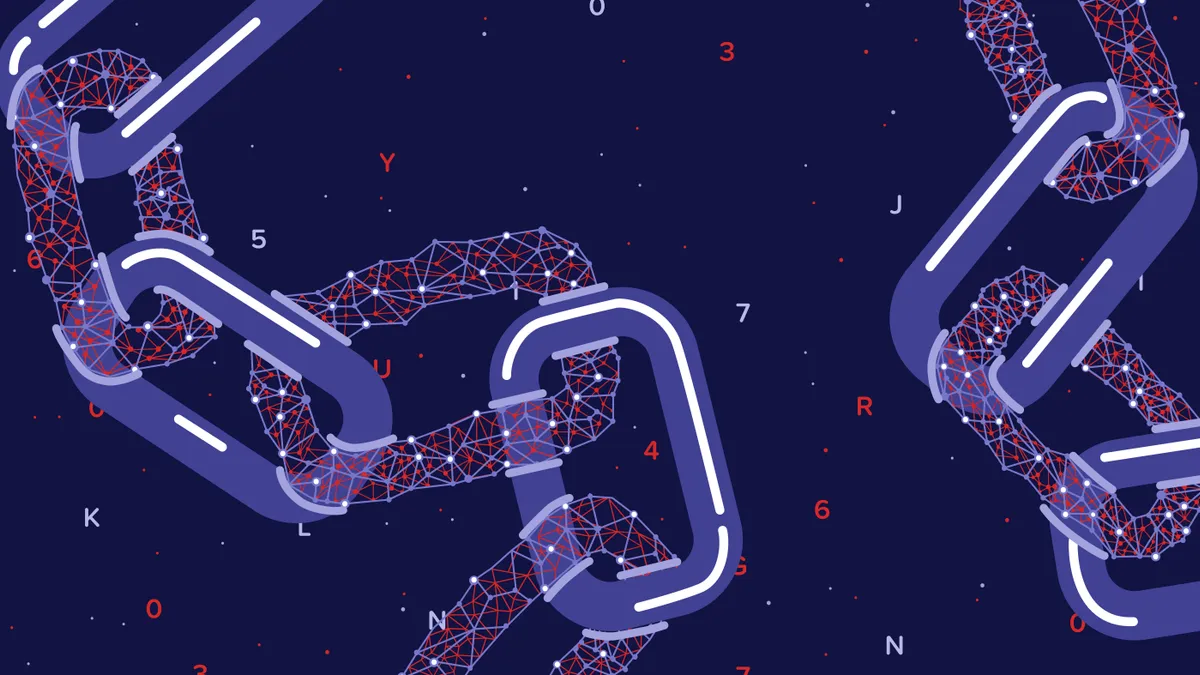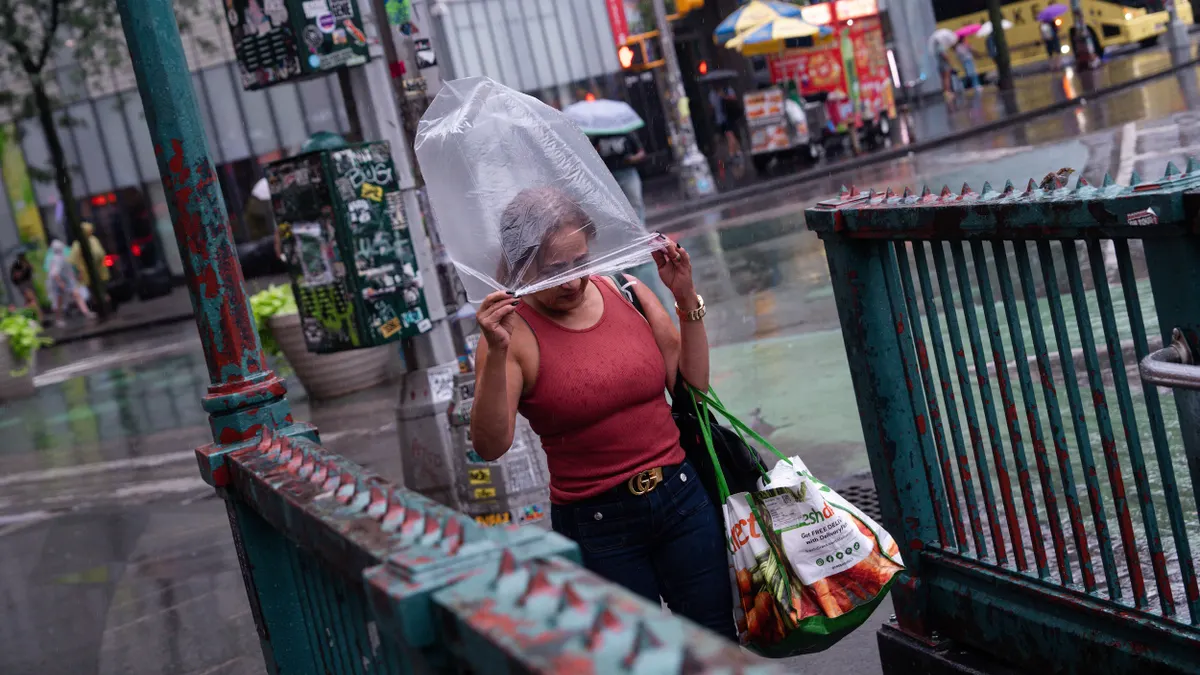Mentioning the word “blockchain” can elicit blank stares and nervous glances, even in the tech-forward smart city space. The emerging concept remains intimidating for many municipal employees, but more are testing the blockchain waters to improve city operations and services.
Blockchain is a digital record storage system that connects a growing list of encrypted records, or "blocks." The decentralized ledger catalogs transactions on multiple computers within a network, and people known as "miners" provide transaction validation or a "proof-of-work." It is the concept on which cryptocurrencies — such as bitcoin — were built, in part because its enhanced security makes the record chain unchangeable.
The decentralized nature means information is stored in a shared online database, not at one central point, thus reducing the risk of a central hack taking down an entire system. In fact, a blockchain system has not yet been hacked, earning the model further accolades for its security protections.
Developers have proven the technology is more than just a passing fad and the concept is expected to touch every global industry in the next 10 years. Demand for employees to fill blockchain-related jobs has shot up 200% in the past year, and the number of developers and consultants in the industry is projected to grow tenfold in the next three years.
Blockchain in action
Cities around the world are dabbling in blockchain technology to improve both internal operations and external services. It can be used for a variety of transactions between two parties, making it ideal for a plethora of municipal applications.
The security that blockchain offers appeals to cities as they increasingly collect scores of data and perform analytics to improve services. Plus, the more connected internet of things (IoT) devices a city houses, the more at risk it can be to a cyberattack, but blockchain can ease some of those worries.
A recent National League of Cities report indicates that public trust in government has dipped — mostly at the national level — with the rapid arrival of a digital revolution and its associated abuses and security breaches playing a part. Incorporating highly secure and transparent blockchain technology is one way local governments can regain public trust.
The report names a variety of areas where cities already are applying blockchain, including transportation, real estate and water management. It also mentions blockchain for secure electronic voting — which Moscow has been testing — and numerous energy applications including microgrids — which a group of four New York utilities currently are exploring.
The concept can let residents securely pay municipal bills like utilities and taxes, or request services. Waste and recycling services use blockchain to incentivize program participation and boost recycling rates, in addition to employing the most common use of the tech so far: smart contracts.
Those agreements between two parties include the contract details within the blockchain metadata. Changes to smart contracts require a new information block to be added, essentially as an amendment, which prevents involved parties from altering details after the contract is in place.
Smart contracts are one way “blockchains are an incredibly powerful tool for [municipal] procurement,” Paul Brody, EY Global Innovation Leader of Blockchain, told Smart Cities Dive. "They allow cities to coordinate all the different departments, to integrate their procurement activities and drive systematic contracts with their suppliers." Using the concept in procurement and asset management can “save cities a ton of money,” he said.
The private sector often is considered the blockchain driver, but some applications like record transparency play better in the public sector.
"One area where I think the public sector entities have an advantage over private enterprises in adopting blockchain… is things that are public record," Brody said. “Big companies don't want competitors to know how much stuff they’re buying or the price that they’re paying,” but that’s exactly the type of information local governments wish to put in the public space for “robust accountability.”
The desire for secure open data recently pushed Vienna, Austria into the blockchain world. "Their initial project is the public distribution of data using technology on blockchains called notarization," Brody said. It allows the city to certify that it "published this information at a certain time, and that what you are seeing if you request a copy of a document or a history of procurement... is a truthful and exact copy of that transaction."
This is completed through a process called hashing, in which information blocks are run through an algorithm for verification. "If I were to change even one letter in that contract and run it through that algorithm, it would come out ... completely different," Brody said. "It holds the city accountable for absolutely accurate, tamper-proof public records."
Starting small
Figuring out the first step for implementing public blockchains can be daunting, especially for those who feel pressure to first devise a wide-reaching, comprehensive blockchain plan. But the concept is one that experts believe can be utilized in small ways first, with potential for expansion later.
"I’m a big believer in ... the one solution at a time track ... even if you want to have a big, strategic plan. Building a huge, strategic plan before you really understand the technology and how it can be used I think doesn’t make sense,” Brody said. Choosing one good business case for blockchain integration might be a better starting point, and then “maybe after you’ve done three or four [projects] you can think about how you link them together or build a strategic plan,” Brody said.
That's how Vienna embarked on its blockchain journey, and a number of other cities have employed that tactic as well. South Burlington, VT, for example, launched a standalone blockchain pilot program to create a real estate transaction ledger, and Austin, TX launched a pilot using blockchain to improve homeless services through tighter verification and privacy protocols.
"Find a good business case, learn something and then try another one ... But know that you will probably make some less-than-perfect decisions in your first couple of implementations."
Paul Brody
EY Global Innovation Leader of Blockchain
Blockchain is considered a strong element for future applications like securing transactions at public electric vehicle charging stations or information sent to and from connected and autonomous vehicles. The concept could one day secure automatic money exchange between connected vehicles and municipal departments, such as for highway tolling or allowing connected vehicles to automatically pay registration fees when passing an IoT device.
Because blockchain still is in its nascent phase, it’s “not yet at the level where you can package a solution and implement it. Most blockchain solutions are still custom or semi-custom,” Brody said, which often makes them a bit pricey. As such, solutions currently are primarily found in large or sophisticated cities with sizable budgets.
“I think we’re still 12 to 18 months away from these solutions being like off-the-shelf software packages. When that happens, then cities will be able to pick them up much more quickly,” Brody said.
Risk aversion frequently holds back some cities from delving into blockchain because they fear testing emerging technology with public funds. That’s another reason for undertaking small projects first instead of putting in place a whole blockchain strategy from the get-go.
"Find a good business case, learn something and then try another one. ... But know that you will probably make some less-than-perfect decisions in your first couple of implementations," Brody said. However, even projects that missed the mark in some areas can still prove valuable. "Even if you don’t make all the perfect decisions, if you say we learned a ton, embraced new technology and saved the city [money], that's a no-lose situation."
Although "blockchain" is a hot buzz word right now, it might not remain that way for long. Brody says it will soon become "invisible," and likens it to the discovery of electricity and how the invention was viewed as revolutionary, but now it's ubiquitous and largely forgotten.
"As the solutions mature, discussion of blockchain will, to some degree, just fade into the background and what will be front and center will be the business case for solving real problems that a city has," he said. It's just a matter of getting past "the learning curve and product maturity curve. Those two curves have to intersect so we get comfortable with [blockchain] and have product-like solutions."



















